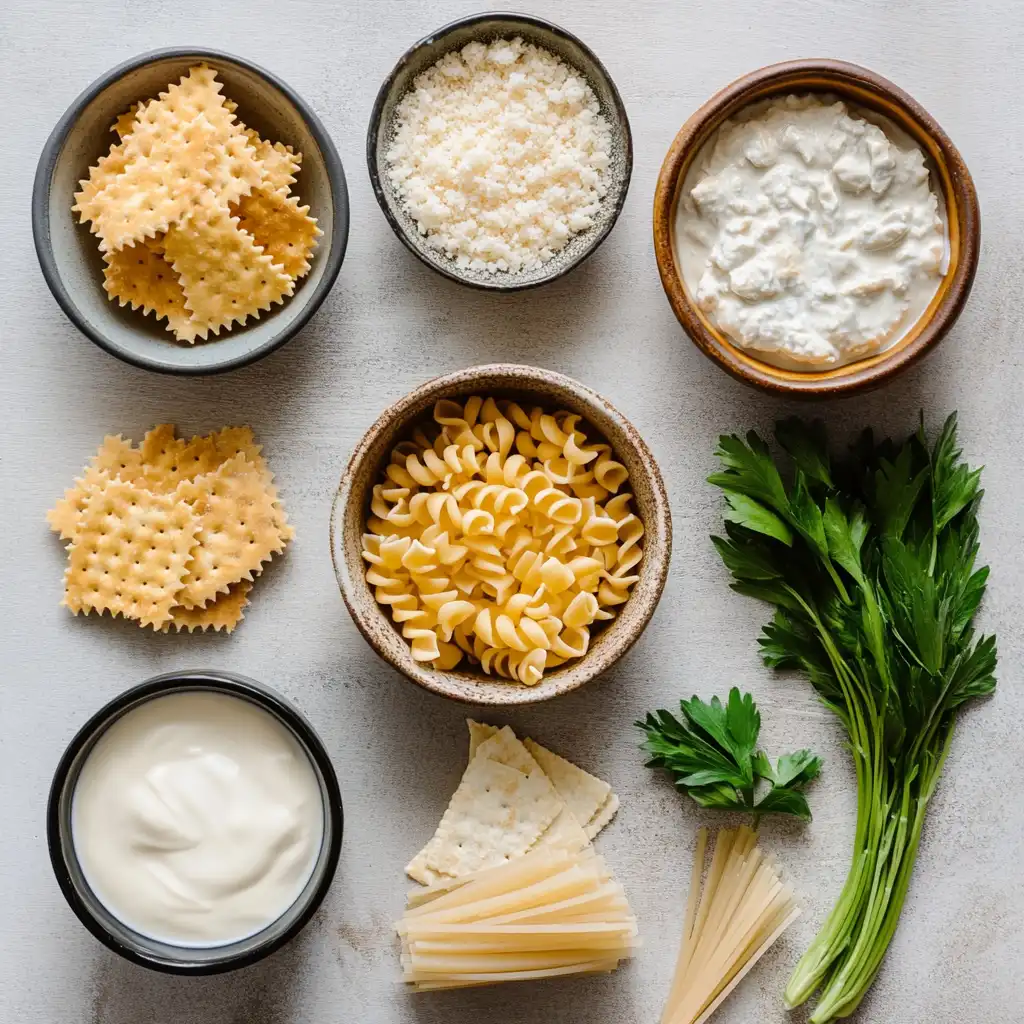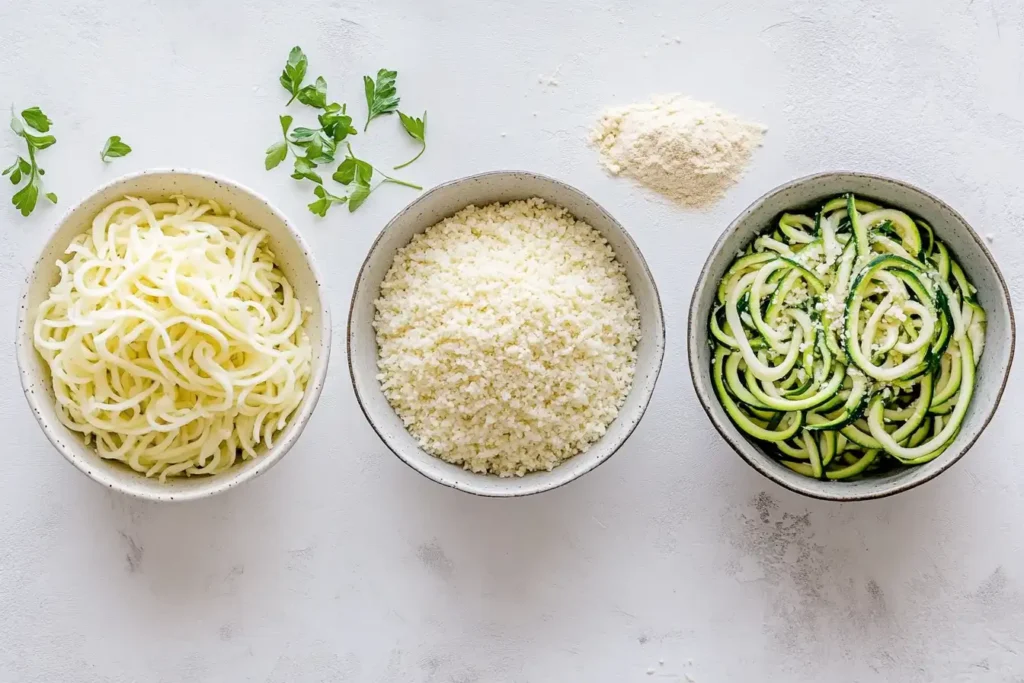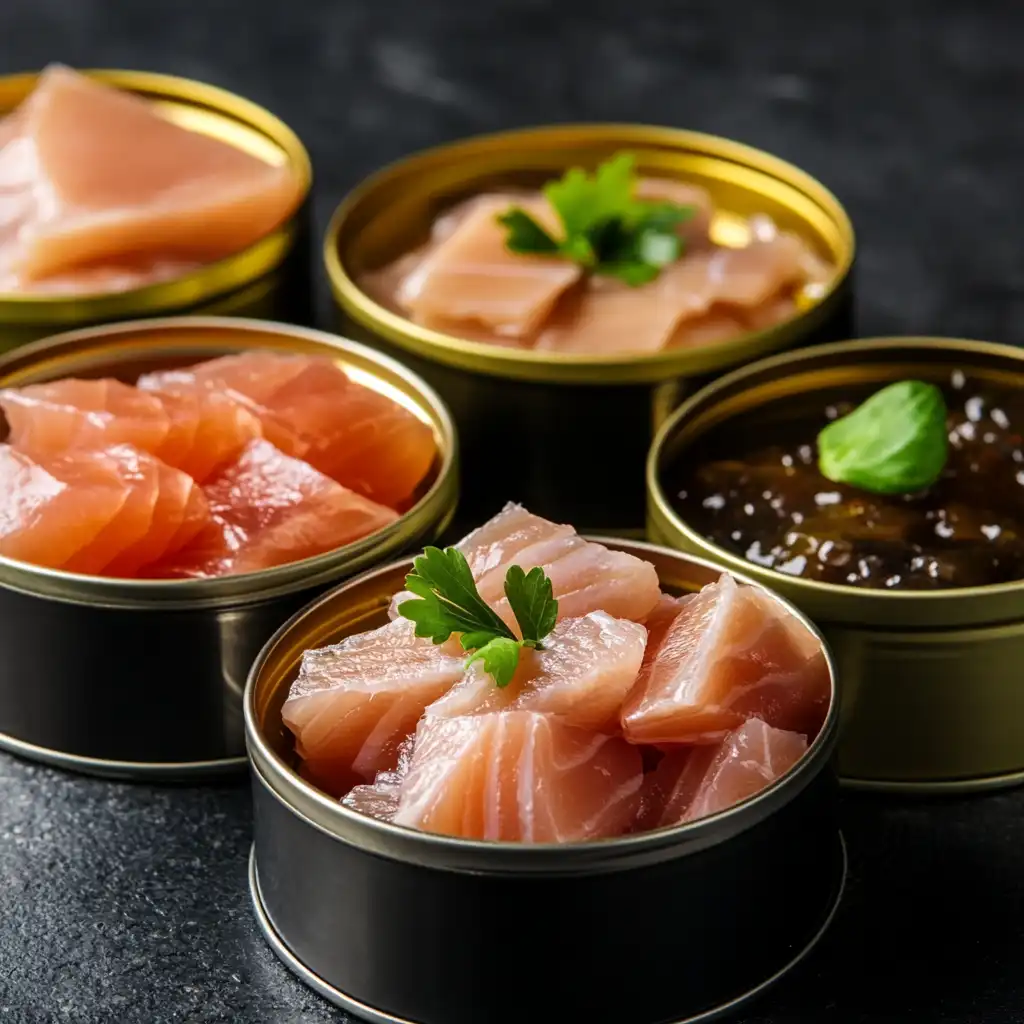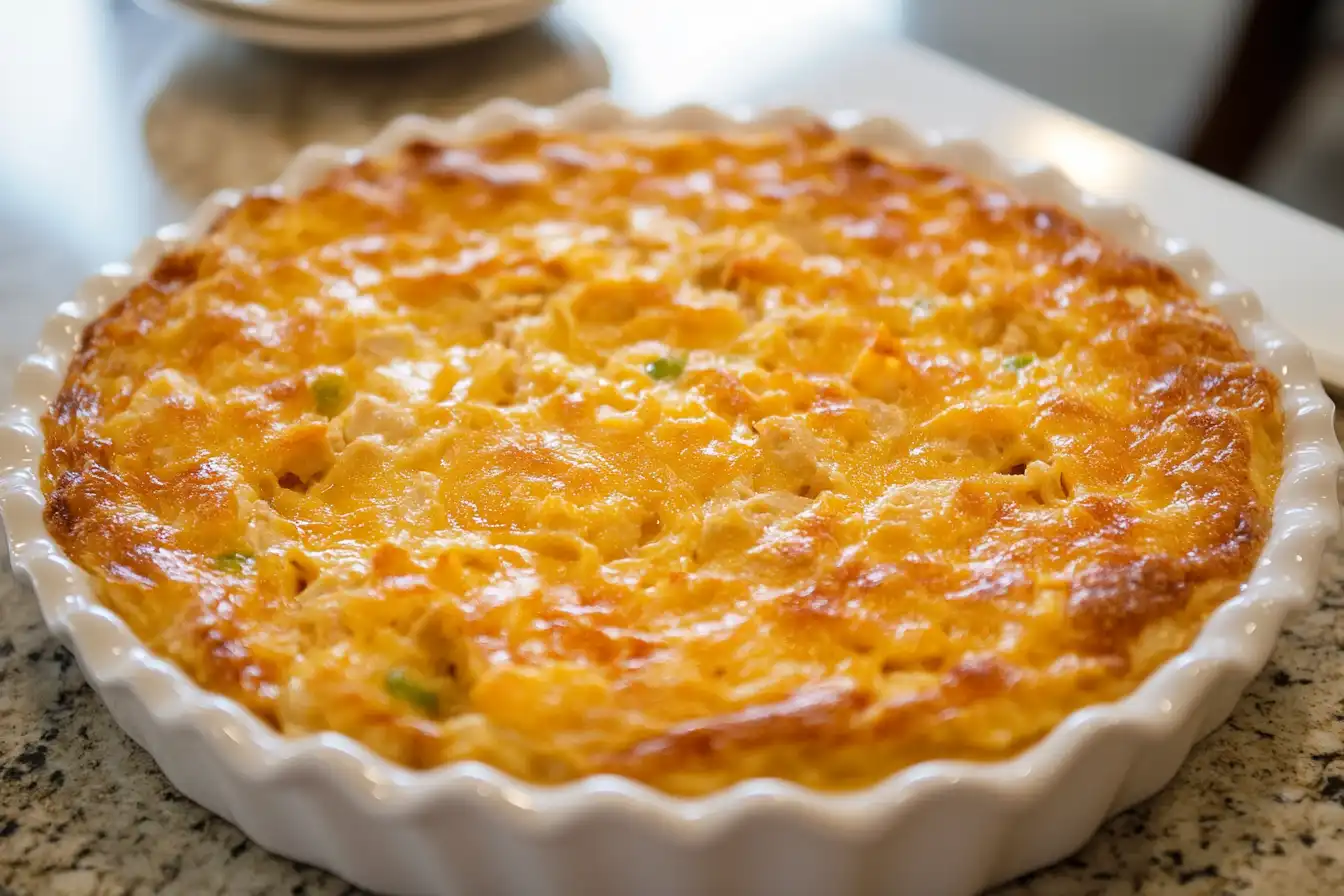Do you wonder, does tuna casserole have a lot of carbs? This article explores the carbohydrate content of this classic dish, providing insights for anyone watching their carb intake. We’ll also look at ways to make it healthier and more suited to your needs.
Understanding the Carb Content in Tuna Casserole
Tuna casserole is a comfort food favorite in many households. However, understanding its carb content is vital, particularly if you are monitoring carbohydrate consumption. The carbs in tuna casserole can vary greatly. This depends on the ingredients used. Common carb-heavy items in this dish include pasta, flour, and some types of cream soup. Therefore, the total carbohydrate amount may be a concern for some.
Key Carb Sources in Tuna Casserole

Pasta is often a primary source of carbs in tuna casserole. Many recipes use noodles like egg noodles or elbow macaroni. These are high in carbohydrates. Cream-based soups, such as cream of mushroom or celery, also add to the carb count. Moreover, some tuna casserole recipes include a topping of crushed crackers or breadcrumbs. These ingredients increase the total amount of carbs further. Therefore, paying close attention to the carb sources is important.
How Carbohydrates Impact Your Diet
Carbohydrates are an essential part of a balanced diet. However, consuming too many carbs can cause increased blood sugar levels. Accordingly, it is important to moderate intake, especially if you have diabetes. Additionally, knowing the carb content of dishes like tuna casserole helps you make informed meal choices. Finally, a balanced approach to carb consumption is best for overall health.
Exploring the Carbohydrate Range in Tuna Casserole
The precise carb count in tuna casserole isn’t always clear. Therefore, it is important to note that it changes based on the chosen recipe. Some recipes can have over 40 grams of carbohydrates per serving. In contrast, others may be much lower. The main differences come from ingredient adjustments. For example, using more vegetables and less pasta reduces the carb content. Thus, understanding these variations is key to controlling your carb intake.
Typical Carbohydrate Count in Standard Recipes
A standard tuna casserole recipe, using egg noodles and cream of mushroom soup, generally contains a moderate level of carbohydrates. A single serving often has between 25 and 40 grams of carbs. However, this number may not be accurate for every recipe. Therefore, it is always best to check the nutrition facts for any recipe you make. Furthermore, you can use recipe analyzers to get a more precise carb count.
Factors Influencing Carb Levels
Several factors determine the carb levels in a tuna casserole. Chiefly, the type and amount of pasta is very important. Also, the kind of soup used contributes a lot. Moreover, toppings like breadcrumbs or crackers affect the final carb count. Besides, any additional ingredients such as flour-based thickeners will raise the carbohydrate amount. Consequently, it is important to be aware of these factors when planning meals.
Lowering the Carb Content of Tuna Casserole

If you are watching your carb intake, there are many ways to adjust the tuna casserole recipe. Therefore, making smart substitutions is important. Specifically, you can reduce the amount of pasta or replace it with low-carb alternatives. Likewise, using low-carb vegetables instead of high-carb options helps lower the carbohydrate load. Indeed, small changes can make a big difference to the nutritional profile of the dish.
Swapping Out High-Carb Ingredients
To lower the carbs, you might swap traditional pasta with zucchini noodles or spaghetti squash. These options offer a good substitute while keeping the dish satisfying. Also, consider making your own low-carb cream sauce using fresh vegetables and less flour. Similarly, you can use almond flour instead of regular flour for thickening. These swaps help significantly reduce the amount of carbohydrates in the dish.
Adding More Vegetables
Adding more vegetables not only reduces the carb count but also increases fiber and nutrients. For example, spinach, bell peppers, or mushrooms can be added to the casserole. Further, cauliflower or broccoli can replace some of the pasta content. Thus, adding more vegetables makes the dish healthier. In addition, it also adds great taste and texture.
Making Tuna Casserole Carb Conscious
While making tuna casserole, keep the goal of lower carbs in mind. Firstly, use low-carb varieties of ingredients where you can. Secondly, adjust portion sizes. Thirdly, keep track of the ingredients that add many carbohydrates. Lastly, focus on a good balance of proteins and vegetables in the dish. By taking these steps, you can enjoy a lighter version of this classic recipe. Ultimately, this will support your health and dietary goals.
The Role of Tuna in Tuna Casserole

Tuna is the main protein source in tuna casserole. Accordingly, it’s important to understand its nutritional role. Tuna, itself, does not contribute to carbs. Indeed, it’s a protein-rich food that provides other benefits. Therefore, choosing tuna is a good way to add protein to a meal.
Tuna as a Protein Source
Tuna is a great source of lean protein. This is essential for building and repairing body tissues. Additionally, it is low in fat and saturated fat. Furthermore, tuna contains important nutrients such as omega-3 fatty acids. These are known for their heart health benefits. Thus, tuna is a healthy addition to any diet.
How Tuna Affects the Carb Count
Importantly, tuna does not have carbohydrates. Basically, it’s a protein that does not raise the carb count in the casserole. However, be aware that tuna can be packed in oil or water. Therefore, choosing water-packed tuna may be better for overall calorie reduction. Moreover, tuna adds significant protein, which may help with sustaining energy and satiety.
Choosing the Right Tuna for Your Casserole
When choosing tuna for your casserole, consider canned tuna packed in water. This is lower in calories and fats compared to oil-packed versions. Also, check for additional ingredients in the can. Specifically, look for brands that do not add unnecessary additives. By doing this, you ensure you’re adding protein without unwanted extras.
Other Components that Add Carbohydrates
Beyond the pasta and soup, other components of tuna casserole may add carbohydrates. For example, toppings like breadcrumbs or crackers can contribute to the overall carb count. Also, some seasoning blends may contain hidden sources of carbs. Therefore, it’s useful to look at all ingredients. Moreover, keeping a close watch of what you add is very beneficial.
The Impact of Toppings on Carb Levels
Many recipes use crushed crackers, breadcrumbs, or fried onions as toppings. These ingredients can add more carbohydrates. Accordingly, using lower-carb options for the topping may be best. For instance, using crushed pork rinds or nuts can be a great substitution. These can give a similar crunchy texture without too many carbs.
Seasoning and Hidden Carbs
Some seasoning blends may contain hidden carbohydrates. Therefore, reading labels is important. Specifically, some spice mixes contain additional ingredients like sugar or flour. Instead, use fresh herbs and spices to season your casserole. Consequently, this helps reduce the carbs and enhances the flavor naturally.
Sauce Ingredients and Carbohydrates
The sauce used in the casserole is another area where carbs can be introduced. Usually, cream-based soups or flour-thickened sauces can be the culprits. To address this, consider making your own sauce with a base of milk or broth thickened with a little cornstarch or xanthan gum, which are lower in carbs. By making your own sauce, you can control the ingredients and reduce carbohydrates.
Tuna Casserole: Making Informed Choices
Ultimately, tuna casserole can have varying amounts of carbohydrates. Therefore, it is up to you to make smart choices. Firstly, choose recipes with lower carb ingredients. Secondly, pay attention to portion sizes. Thirdly, check nutrition labels when you can. Finally, you should enjoy your tuna casserole while meeting your dietary goals. Consequently, you can customize this dish to fit your needs.
Tips for Limiting Carbohydrates in Your Casserole
When looking to lower the carbohydrates in your casserole, you should consider several options. Initially, replace high-carb pasta with zucchini noodles or cauliflower rice. Afterward, focus on using more vegetables. Subsequently, swap high-carb creamy sauces with a low-carb sauce. Additionally, reduce carb heavy toppings by choosing alternatives like shredded cheese or nuts. Therefore, making these switches can greatly reduce the carb content.
Balancing Carbs and Proteins
Balancing carbohydrates and proteins is an important factor for a good diet. Therefore, in tuna casserole, it’s essential to pair the protein-rich tuna with the right amount of carbohydrates. For example, when lowering carbs, make sure to add extra protein. Thus, using tuna as your main source of protein and lowering the carbohydrates leads to a balanced meal.
Satisfying Your Cravings Without the Extra Carbs
Enjoying tuna casserole while limiting carbohydrates is totally possible. By making some strategic swaps and additions, you can reduce the carbs without sacrificing taste. Hence, there are many ways to adjust a recipe. Specifically, choose low-carb ingredients, reduce portion sizes, and increase the protein content. Ultimately, you can enjoy a satisfying meal that fits your preferences.
Variations of Tuna Casserole for Different Dietary Needs

There are countless variations of tuna casserole. Therefore, you can adapt this dish to fit many dietary needs. Specifically, you can create gluten-free, lactose-free, or low-carb editions of the recipe. In fact, there is no limit to the type of adjustments you can make. By making smart ingredient choices, tuna casserole can meet almost any dietary requirements.
Gluten-Free Tuna Casserole Options
If you need a gluten-free version, you will need to avoid traditional wheat pasta. Instead, use gluten-free pasta, such as those made from rice, quinoa, or corn. Also, ensure that the soup and seasonings used are gluten-free. Finally, always double-check labels for hidden gluten sources.
Lactose-Free Tuna Casserole Options
For those who are lactose-free, you can replace dairy with non-dairy alternatives. Accordingly, use plant-based milk, such as almond, soy, or oat milk. Similarly, choose lactose-free cream cheese or mayonnaise. Thus, you can create a creamy tuna casserole without any dairy.
Low-Carb Varieties of Tuna Casserole
Low-carb varieties focus on greatly reducing the carb content. Firstly, use zucchini noodles, spaghetti squash, or cauliflower rice instead of regular pasta. Secondly, rely on vegetables to add volume. Thirdly, thicken sauces using non-carb thickeners. Therefore, these variations make tuna casserole suitable for those watching their carbohydrate intake.
Frequently Asked Questions (FAQs)
How many carbs are in tuna casserole?
The number of carbs in tuna casserole varies. A typical serving can range from 25 to 40 grams of carbohydrates, depending on the specific recipe. Ingredients like pasta, cream-based soups, and cracker toppings contribute the most to the carb count. Adjusting the recipe with low-carb alternatives can reduce this number.
Is canned tuna high in carbs?
No, canned tuna is not high in carbs. Tuna is a protein-rich food and contains virtually no carbohydrates. The carb count in tuna casserole comes mainly from other ingredients like pasta, sauces, and toppings, not the tuna itself.
Does casserole have carbs?
Yes, most casseroles do have carbs. The carb content comes from ingredients like pasta, rice, or potatoes, as well as high-carb sauces or toppings. The exact amount varies depending on the ingredients. Casseroles can still be a part of a balanced diet if you choose lower-carb options and watch portion sizes.
How many carbs are in tuna bake?
The carb count in a tuna bake is similar to that of a tuna casserole. It usually ranges from 25 to 40 grams of carbohydrates per serving. This will depend on the amount of pasta, creamy sauces, and toppings used. You can lower the carb content by making substitutions, such as using vegetables instead of high-carb ingredients.
Conclusion
So, does tuna casserole have a lot of carbs? The answer is: it depends. Traditional recipes often have a moderate to higher-carb content due to pasta, crackers, and cream-based soups. However, there are many ways to change this. By substituting high-carb items with low-carb alternatives and loading up on vegetables, you can enjoy a healthier and carb-conscious version of tuna casserole. Ultimately, understanding how ingredients contribute to the total carbohydrate count helps you make informed choices that fit your dietary needs.

